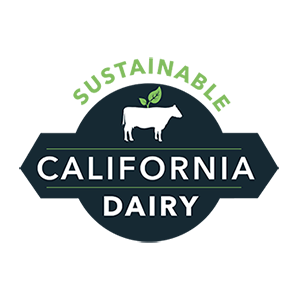While the prediction of additional rainfall this week in our drought-ravaged state is welcome, it may present challenges for some producers. Some dairymen may be having to address mud management, something they haven’t had to deal with in more than four years. Some facilities, particularly in flood prone areas or protected by state or private levies, may merit additional water quality management and/or emergency planning. Below are some tips and links for producers as we await additional precipitation.
Mud Management for Dairy Producers
Local flooding and ponding on the farm is a manageable problem. Dairy cattle housed in extremely muddy pens for long periods experience a decrease in production and an increase in disease. Most corrals can be maintained throughout the year with attention to corral slope, rain water diversion and regular scrapping. Correcting mud problems during the winter however can be difficult, after the soil has been saturated by rain. During a true emergency producers may need to stabilize soil with wood chips, gravel, road base, or provide alternative travel paths in order to keep cattle moving to their feed bunks. CDQAP has produced a webpage Managing Mud on Dairies which details the most cost-effective management options available to producers.
Water Quality Management for Dairy Producers
During periods of heavy rainfall and associated runoff, it is critical to remember that any rainfall that contacts dairy manure (liquid and/or dry) or silage leachate must be maintained on your property and diverted to the pond for collection. In the unfortunate circumstance an offsite discharge it is advised and required that producers contact their Regional Water Quality Control Board within 24 hours and follow-up with a written report of the incident within 2 weeks.
The dairy’s Nutrient Management Emergency Plan developed in CDQAP classes and located in your binder provides key contact information for site-specific contacts for your dairy depending on the type of discharge. In addition to your environmental consultant and/or field representatives, these include the local Sheriff’s Office, County Use Permit Office, Regional Water Quality Control Board, and local Fish and Game Warden. A previous article prepared by Dr. Deanne Meyer addresses preparing for heavy winter storms.
Flooding Emergencies for Dairy Producers
Unlike localized farm flooding, facility inundation (due to catastrophic flooding from creeks and rivers or levy failure) is extraordinarily rare. The Farm’s Emergency Response Plan (a document required by the F.A.R.M program) can be invaluable in those situations. In addition, CDQAP and the University of California-Davis have produced a brochure Flooding and Livestock Owners for producers preparing for or facing an extreme flooding event. A dairy-specific emergency flood dairy evacuation checklist, reviewed by the California Department of Food and Agriculture, is available.
Using FEMA Maps to Determine Your Flood Risk
One quick, easy resource to help determine what your flood risk is, as well as potential evacuation routes, is the FEMA Flood Map Service Center at www.msc.fema.gov/portal/search.
- Simply enter your farm’s actual location into search box and click “search”.
- The portal gives you several options for viewing, but the easiest option to click for the “Interactive Map” display.
- You will be directed out of the current page to the interactive site.
- It may take some time to load your map. You may also have to zoom in or out of the map display before you get something that looks like the map below.
- The example below shows a typical result (this one of a large equine confinement facility) with the blue shading indicating an area having a 1% (1-in-100-chance) of flooding every year.
- This blue-shaded area is sometimes (inaccurately) referred to as a “100-year” flood plain, but is rather the equivalent of a 26% chance of experiencing flooding during any 30-year period, such as a standard home mortgage.
- The FEMA flood map does not tell you how severe the flooding might be; for example, whether the water will be one foot or six feet deep, or what the speed of the current of the floodwaters will be. This will depend the local topography, the amount of precipitation and duration of rainfall.










